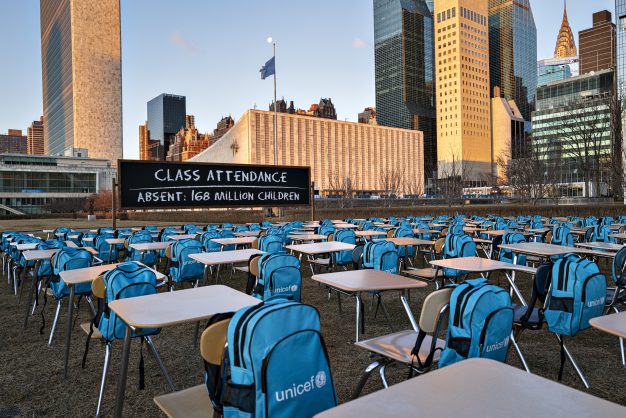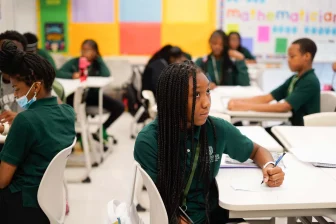
Global ‘tracker’ launched to measure COVID’s impact on education worldwide
With over 1.6 billion children worldwide having had their education severely disrupted by the COVID-19 pandemic over the past year, Johns Hopkins University, the World Bank, and UNICEF have created a COVID-19 – Global Education Recovery Tracker to help measure how countries have responded.
It is designed to help countries’ decision-making by tracking reopening and recovery planning efforts in more than 200 countries and territories.The initiative aims to capture and showcase information across four key areas:
- Status of schooling
- Modalities of learning (remote, in-person or hybrid)
- Availability of remedial educational support
- Status of vaccine availability for teachers
The Global Education Recovery Tracker seeks to build upon Johns Hopkins University’s pivotal work in gathering quality data on COVID-19 cases, testing, and vaccinations, along with the strategic roles that the World Bank and UNICEF play in operational and policy support to countries during the pandemic.
Sunil Kumar, Johns Hopkins Provost and Senior Vice President for Academic Affairs Sunil Kumar, said: “We hope the work of this partnership will build understanding of how COVID-19 continues to affect students everywhere. Throughout the pandemic Johns Hopkins has demonstrated the vital role for universities in providing accurate, evidence-based data and information for the world.”
‘Build understanding of how COVID-19 continues to affect students’
Data up to this month (March) shows that 51 countries have fully returned to in-person education, while students in more than 90 countries being instructed through multiple modalities, with some schools open, others closed, and many offering hybrid learning options.
Regionally, there are emerging indications of shifts in learning modalities. Remote learning continues to dominate in the Middle East and North Africa where schools were largely closed in recent weeks. However, in Sub-Saharan Africa, most students are physically attending school. In the East Asia and Pacific region, in-person education has mostly resumed, with stringent social distancing measures. The regions of South Asia, Central Asia, and Europe are mainly relying on hybrid education where the infrastructure allows. Across Latin America, countries are using mixed approaches that include remote, hybrid, and in-person education. However, the majority of schools remain partially or fully closed to in-person classes with remote education as the most used modality.
Jaime Saavedra, Global Director for Education at the World Bank, said: “The world was facing a learning crisis before COVID-19. The learning poverty rate – the proportion of 10-year-olds unable to read a short, age-appropriate text – was 53 per cent in low- and middle-income countries prior to COVID-19, compared to only nine per cent for high-income countries. A year into the pandemic, continued disruptions to schooling, shifts in learning modalities, and concerns for students’ well-being are ever greater, and this learning crisis is getting worse. COVID-19 related school closures are likely to increase learning poverty to as much as 63 per cent.”
‘Collecting and monitoring data is critically important’
Saavedra emphasised the importance of this tracker: “In many countries, students and teachers need urgent supplemental support. The return to school requires accelerated, remedial, and hybrid learning, as well as other interventions. Collecting and monitoring this data on what countries are doing is critically important to help us understand the magnitude of what support is needed as we go forward, learning from the major trends observed among countries.”
In addition to tracking the operational status of schools, the tracker will also monitor how students are being supported. This includes changes to the school year schedule, tutoring, and remediation, especially for the primary school grades. These interventions will be a critical component of the education recovery process after a year that has affected the learning and well-being of 95 per cent of school children across the globe.
In countries where the COVID-19 vaccine is available, the tool is tracking whether teachers are eligible as a priority group. As of early March, teachers are largely not being immunized as a priority group in low- and low-middle-income countries. Of the 130 countries where vaccine information was available, more than two-thirds are not currently vaccinating teachers as a priority group.
‘We must prioritise the reopening of schools’
“Even as vaccines are beginning to rollout worldwide, for hundreds of millions of the world’s schoolchildren, the consequences of this pandemic are far from over,” said Robert Jenkins, Chief of Education for UNICEF. “We must prioritise the reopening of schools, including prioritising teachers to receive COVID-19 vaccines once frontline health personnel and high-risk populations are vaccinated. While such decisions ultimately rest with governments making difficult tradeoffs, we must do everything in our power to safeguard the future of the next generation. And this begins by safeguarding those responsible for opening that future up for them.”
The tracker is intended to offer evidence that informs policy makers and researchers working on COVID-19 responses. The tool is built to have the flexibility to incorporate emerging issues while offering a time trend of actions in the past months.




